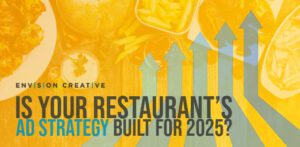You can see it now – your company just transformed their outdated, inefficient marketing “strategy” into a multi-layered, lead-generating powerhouse. There are new customers left and right, profitability is up, customers are becoming huge advocates – and the board looks at you and says, “Wow, (Insert your name here), I can’t thank you enough for convincing us to invest in a modern marketing strategy! You’re amazing! Really. Here’s a raise. Also, we got you this gift. It’s a yacht. Take er’ for a spin. (Throws keys and you actually catch them, high fives all around, queue personalized theme song.)”
And, scene.
You’re back in your office. You know what should be done, but you also know it will be met with all kinds of excuses why it can’t be done, all of which really boil down to lack of knowledge and fear of change. But fear not, we can help.
For the sake of this article, we’ll take the position that a “modern marketing strategy” is best described by:
“Creating an ecosystem of digital and printed marketing assets which build a high perception of value, and establish you as the leader in your space by providing relevant, helpful and easy-to-access information that your potential and existing customers are looking for.”
If you are going to show the powers-that-be that there are much more relevant, efficient and cost-effective marketing strategies out there, here’s a few talking points worth mentioning:
1. You’re spending too much.
Most companies stuck in the old ways of marketing their business are either:
- Spending too much on an ineffective or non-targeted media outlet
- Missing opportunities
- Unable to really measure the ROI for their investment
In a modern marketing approach, each tactic should work together to drive targeted, high ROI results that can actually be tracked, measured, adjusted and optimized quickly and at a lower cost. It’s worth noting that “every single aspect of online marketing can be measured, tracked and analyzed.”
2. Your competition is probably already doing it
In a recent poll, 69% of U.S. businesses reported having a dedicated content marketing group, 88% of businesses use social media marketing in some form, and 50% of businesses are using some form of marketing automation. I could go on, but you get the point — the world is responding to the language of consumers, and the longer you wait, the more those consumers are going to go with your competitor.
3. Your current customers will love you for it
A big part of a modern marketing mix is giving your existing customers what they want so that they stay your customers for life. And what, exactly, do your customers want? That requires a deep-dive into your ideal target personas to understand what makes them successful, where they get their information, what motivates their purchases, and so on. It can be incredibly helpful to have an outside resource to help guide this process. As they say, “It’s tough to see the forest through the trees.”
4. Your prospects won’t wait
The way we buy products, hire service providers and source vendors has changed dramatically since the inception of the Internet. Instead of finding products/services from ads, trade shows, and other traditional means (which still have their place!), 81% of purchase decisions begin with online research. This means that when your customers are looking for you or your product, they start by typing in a question, a service, or a challenge they’re facing. If you’re the solution that they’re looking for, you’d better have some helpful information that they can find and, in turn, use to learn about your company as a potential solution provider.
5. Don’t throw out the old playbook
If your business development strategy relies on relationships and referrals, that’s great! Keep it up! Inbound marketing’s goal is to grow the number of people that want to have that relationship with you by providing those potential customers with your unique insight so that trust is built early on. When they are ready to make things “Facebook official” (sometimes, literally) your team will be there to do what they do best — foster that relationship with a personal touch.
6. Outsource to save time
Sometimes we talk with businesses that buy-in to this inbound mindset, but then think, “Well, we can do this internally.” And that’s totally possible, as long as you’re willing to invest in new, specialized staff that have expertise in content creation, graphic design, workflow management, creative concepting, ad campaigns, etc. The truth is that it is much cheaper and easier to hire an outsourced agency that already has the chops to create results. If you want to learn more about the advantages of outsourcing versus hiring internal staff, let’s talk.
-FINAL(01-00)-White&Blue-01.svg)





